#newbery
Text
It was Leslie who had taken him from the cow pasture into Terabithia and turned him into a king. He had thought that was it. Wasn't king the best you could be? Now it occurred to him that perhaps Terabithia was like a castle where you came to be knighted. After you stayed for a while and grew strong you had to move on. For hadn't Leslie, even in Terabithia, tried to push back the walls of his mind and make him see beyond to the shining world--huge and terrible and beautiful and very fragile? (Handle with care--everything--even the predators.)
Now it was time for him to move out. She wasn't there, so he must go for both of them. It was up to him to pay back to the world in beauty and caring what Leslie had loaned him in vision and strength.
As for the terrors ahead--for he did not fool himself that they were all behind him--well, you just have to stand up to your fear and not let it squeeze you white. Right, Leslie?
Right.
Katherine Paterson, Bridge to Terabithia
#books#bridge to terabithia#katherine paterson#terabithia#quotes#literature#newbery#dealing with grief#moving forward
3 notes
·
View notes
Text
Roll of Thunder, Hear My Cry (1977)
Roll of thunder
Hear my cry
Over the water
Bye and bye
Ole man comin’
Down the line
Whip in hand to
Beat me down
But I ain’t
Gonna let him
Turn me around.
[Spoilers ahead]
What an important book — just as tense as The Slave Dancer in parts, but less horrifying and more insightful and entertaining... which I have some (not-so-groundbreaking) thoughts about. (These posts keep getting longer and longer, but forgive me; I was excited about this one.)
Roll of Thunder, Hear My Cry was always on the shelves in my elementary classrooms, but I was never interested enough to pick it up. I remember thinking that the book must be written in something like Shakespearean English, given the title. And I suppose this is kind of true, although not with ye olde English. The dialog spoken by the Logan family is written in African American Vernacular English while the narrative portion is in more traditional written English.
I appreciate this because it both gave insight into how Cassie and her family communicated with each other without code-switching and illustrated the idea that speaking "properly" is not indicative whatsoever of actual intelligence. Even today, in which it seems like anyone non-white person is automatically dismissed if they can't speak perfect English without a thick accent, I appreciated seeing phrases like, "You care what a lot of useless people say 'bout you you'll never get anywhere, 'cause there's a lotta folks don't want you to make it” spoken aloud by characters. The Logan family felt much, much more real than the Black characters in Slave Dancer, who were almost always talked about collectively as "the blacks" and as though they didn't have the mental capacity to communicate at all.
But before Analysis Brain takes over the rest of this post, let's go into the plot a bit:
The story is about the Logans, a Black family in the American South during the Jim Crow era. There has just been a lynching in the community, which leads Cassie on a roundabout journey during the school year to figure out the role she is supposed to hold in society as a Black girl. A lot of different relationships between the Black and white people in the community take place:
TJ, a friend of Cassie's brother Stacey, thinks he's a hotshot for hanging out with some older white boys and feels like this has elevated his social status, even though they're just toying with him as a joke. They end up getting him to commit a crime with them and pin it on him because they're aware of their privilege; it's ultimately their word against his.
Cassie's teacher embodies the "don't bite the hand that feeds" mentality. When Cassie is outraged after finding out that her class's textbooks used to belonged to white children and were only given to the Black school once they were torn up and worn out, her teacher punishes her and her younger brother for having a problem with it.
Jeremy, a boy from a prominent white family, likes to hang out with Stacey and walks in the mornings with the Logan family before they part ways to go to their separate schools, but Stacey rejects his friendship several times because he's suspicious of Jeremy's motives. In this case, a genuine offer of friendship is confused for being transactional, just from what he's seen of other interactions between Black and white folks.
In the end, tensions between Cassie's family and the Wallaces, the white family that orchestrated the first lynching, come to a head. TJ, who participated in a robbery with two of the Wallace sons that led to a white man's accidental death, is about to be lynched, but a sudden fire in the Logans' cotton fields leads to everyone helping to put out the flames. TJ escapes the situation with his life, but he still ends up going to jail for the crime. At the very end, Cassie realizes her father had set fire to his own field to cause a distraction that would end up affecting everyone in the community if they didn't all work together to stop it.
But my favorite part by far was the long con that Cassie pulls on a rude white girl, Lillian Jean. In short, LJ disrespects Cassie and asks her to call her "Miss" as a show of subservience, and when Cassie protests, Cassie's grandmother makes her apologize to both LJ and her father to avoid an even worse conflict, even though she's done nothing wrong. Cassie decides to take this apology to the extreme and pretends to be LJ's friend and "know her place": she carries her books for her, compliments her, brushes her hair, etc., as though she was LJ's personal servant. During this time, she learns all of LJ's most important schoolgirl secrets, including which boys she likes. After some time passes, Cassie suddenly drops the act and pushes LJ into the mud one morning, making her promise to not bother her again and threatening to reveal her secrets if she tells anyone what Cassie did.
The chapter ends with Lillian Jean seeming completely shocked, saying she truly thought Cassie was her friend during the entire act. I think this shows the true ignorance in the white perspective at the time: many religious leaders in the Bible-thumpin' South preached that whites were God's chosen people and Black people were always intended to serve others, so I doubt Lillian Jean even thought to view Cassie as a real person. To her, Cassie could only ever be an uneducated, opinionless servant — a background character without her own personality who only has value when serving white people. For Lillian Jean to confuse Cassie's act with true friendship shows how many assumptions she's making about Cassie's very personhood.
In this case, I don't think the book was trying to portray LJ as a serious aggressor; if anything, it shows that she's not really at fault at all by way of sheer ignorance. From what the rest of the book shows, Lillian Jean was just parroting her family's views when she saw Cassie acting as though she had value beyond what was socially expected of Black members of their community, so she belittled Cassie to put her back into the role she was "supposed" to fill. Of course, this mindset is still around today in different ways (e.g., the more modern "I don't care if you're gay, but don't shove it down my throat" mentality if a same-sex couple dares to hold hands or essentially do anything a straight couple would do in public), and maybe it always will be.
This is nothing new (High School Musical illustrated roughly the same thing through teen romance and dance numbers nearly 20 years ago), but: There's such a deep-seated need to show others where we feel they belong in relation to ourselves, and I think this largely reflects what we were shown and taught by others in our childhoods. Our egos are too fragile to be able to let go of the things that other people do and not feel a desire to "put them in their place" if we were shown all our lives that our own place is higher on the totem pole — but acting rudely because of ignorance isn't an acceptable excuse in the Internet Age.
One of the quotes I try to live by goes something like, "Your first thought is what society has told you to think; your second thought determines your character." We have more opportunities than ever before in history to inform and shape that second thought into something kind, respectful, and productive.
With The Slave Dancer, I felt nothing but disgust and a strong desire to put the book down (or even throw it in the trash) while reading Jesse's perspective of being an unwilling white participant in the transatlantic slave trade. The idea that the slaves in Slave Dancer did not have any dialog forced the focus onto the despicable actions of characters like Ben Stout, who tormented slaves for fun, and it was just tragedy after tragedy until the slaves all perished at the end of the book.
But when given only the perspective of the Black characters in Roll of Thunder, I couldn't put it down and read the whole thing across two days. Both stories depicted race-related violence and gave a good picture of what people are truly capable of when driven by a hatred of the "other," but I was much more willing and eager to root for the Logan family and read about their lives in their own words than play the part of the powerless observer like Jesse.
This is long enough: 9/10, Recommendable.
#booklr#books#currently reading#newbery#newberyaward#newberymedal#reading#books and reading#roll of thunder#hear my cry#roll of thunder hear my cry#kids books
2 notes
·
View notes
Quote
Sometimes fiction is a way of coping with the poison of the world in a way that lets us survive it.
Neil Gaiman, Newbery Medal Acceptance Speech (2009)

Art by Felicia Hoshino
#neil gaiman#children's fiction#fantasy#author#newbery medal#newbery#literature#english literature#books#books & libraries#quotes#fiction
8 notes
·
View notes
Text
#ala#ala awards#american library association#newbery#caldecott#dave eggers#vashti harrison#the eyes and the impossible#big#picture book illustration#kids books
1 note
·
View note
Photo

My dear @megmedinabooks, that wonderful #Newbery-award winning #writer whose #novels I have had the joy to translate, is the proverbial gift that keeps on giving. That is literal. Yesterday, when I arrived home, I had a package waiting for me. It contained a framed certificate of the Gold Standard Selection Award and a golden pin from the @jrlibraryguild, alongside a beautiful handwritten note from #MegMedina, in which she says that she wants me to have this recognition to my translation of “Merci Suárez se pone las pilas” because it “rightfully belongs” to me “for all the love, attention, and concern I gave to the translation.” (Yes, of course that tears of gratitude made their timely appearance as I read the postcard.) I adore Meg. And, if you know her or have read her work, you adore her, too. I also love speaking with her. And we recently did just that for the #podcast “#AskALibrarian,” hosted by @juliewriteswords. You can listen to our conversation on the link in my bio. I also hosted conversations with several of my colleagues and their English and Theory of Knowledge students about the art and the craft of literary translation. Scroll to the right for some photos. Wait. You can do more! You can treat the middle schoolers in your life by giving them as their holiday gift any (or all!) of the #books from the #MerciSuárez saga… in either language. Or in both! It is a proven fact that if you buy the #novels from your local #bookstore, a unicorn will get their wings. I know that @watchungbooksellers will be happy to send them to you! So get your shopping done now, and thank me later. Great books can never go wrong! Happy reading, folks! https://www.instagram.com/p/CmMlXY5Os1P/?igshid=NGJjMDIxMWI=
0 notes
Text


"A Year Down Yonder" by Richard Peck
This and the one before it are hilarious! Highly recommend! The third book just had me sad, so I don't recommend the third. But this and the first one are fantastic! 😊
QOTD: Who is your favorite Gravity Falls character?✨
Answer: Grunkle Stan for me! 🤣
#funny books#fun books#feral women#wild woman#crazy grandma#historical fiction#the great depression#great depression#grandma#grandmacore#morally gray#morally gray characters#morally grey women#middle grade books#newbery award#short books#quick read#grunkle stan#gravity falls#a year down yonder#richard peck#book recommendations#book#book rec#books#book review
20 notes
·
View notes
Text



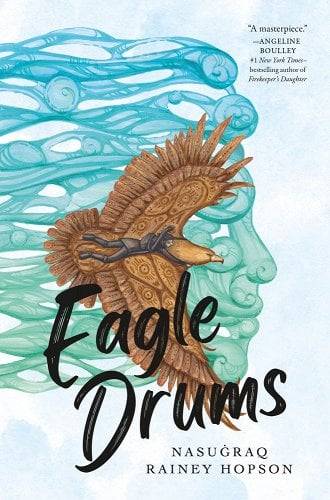
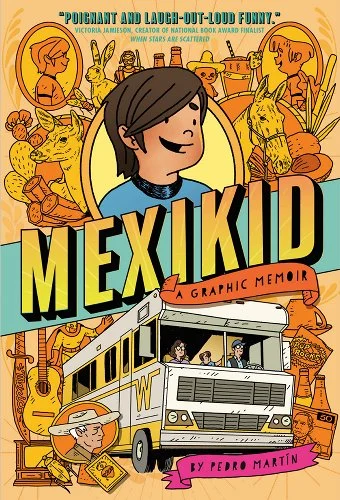

Congratulations to the 2024 Newbery books!
#Newbery Award#Mexikid#Simon Sort of Says#The Many Assassinations of Samir the Seller of Dreams#Eagle Drums#The Eyes and the Impossible#Elf Kid and Owl Head#Dave Eggers#MT Anderson#Erin Bow#Pedro Martin#Daniel Nayeri#Nasuġraq Rainey Hopson#ALA Youth Media Awards#books#middle grade
53 notes
·
View notes
Text
Now that Neil Gaiman is being exposed for being an abuser can we talk about how he won the Newbery in 2009 even though since a whole chapter was previously published (and received another award) it shouldn't have qualified?
WEDNESDAY, APRIL 1, 2009
GRAVEYARD BOOK TO BE STRIPPED OF NEWBERY?
For the first time in history, a title selected for the highest honor in children’s literature, the John Newbery Medal, may be stripped of the prize. This past weekend, a committee of concerned librarians convened in Chicago with a petition demanding the American Library Association revoke the medal given to Neil Gaiman’s THE GRAVEYARD BOOK at the recent midwinter conference. At issue is the book’s eligibility for the award.
“The terms for the Newbery Medal are crystal clear,” states Carol Barbour of the Topeka Public Library, who is leading the anti-GRAVEYARD effort. “In order for a book to be eligible, it must be an original work published during the preceding year. If a book -- or even a portion of a book -- has been previously published it is considered out of contention.”
Ms. Barbour is referring to the fourth chapter of THE GRAVEYARD BOOK, titled “The Witch’s Gravestone,” which was previously published in at least two 2007 anthologies, WIZARDS : MAGICAL TALES FROM THE MASTERS OF MODERN FANTASY (Berkley) and M IS FOR MAGIC (HarperCollins.)
“Carol Barbour has no case,” says an ALA member, speaking on condition of anonymity. “Before a book can be considered for the Newbery, it must be thoroughly vetted by the Association for Library Service to Children. I’m quite sure that THE GRAVEYARD BOOK was deemed completely eligible in every regard. I can’t believe that anyone is taking this sideshow seriously.”
But the American Library Association apparently is taking Barbour’s complaint very seriously, even holding a rare closed-door meeting with her committee this past Sunday afternoon.
“It was insane,” said one ALA member in attendance. “Carol started the meeting by dramatically ripping the gold foil sticker off her copy of THE GRAVEYARD BOOK, then said that every librarian in the nation would soon be following suit when the award is revoked.”
Referring to Sunday’s closed-door session as “productive,” Barbour said, “I certainly wouldn’t be pressing this issue if Gaiman’s book contained just a few previously-published paragraphs, or even a short chapter. But “The Witch’s Headstone” is -- hello? -- forty-five pages in length and takes up nearly fifteen percent of the novel! When it was published in the WIZARDS anthology it won a Locus Award as the year’s ‘best novelette.’ Readers may approach THE GRAVEYARD BOOK expecting the literary equivalent of a gourmet meal, but what they’re really getting is Gaiman’s leftovers.”
Some ALA members have referred to Ms. Barbour as a “children’s book gadfly” who has tried to nominate herself for the Newbery, Caldecott
and other award committees many times in the past but has never received enough votes to serve on these juries. Some recall her aborted attempt to revoke the 2007 Newbery winner, THE HIGHER POWER OF LUCKY, because of its “unwholesome language.” Last year she protested Brian Selznick’s THE INVENTION OF HUGO CABRET winning the Caldecott because she considered it “too heavy for wee hands to hold.” But this year she seems to have found some major-league support in her attempt to bring down THE GRAVEYARD BOOK. The picture on the left shows a triumphant Barbour (in blue, holding Gaiman's book) after last Sunday’s meeting, posing with Shirley Sach of Ball State University, who served on the Newbery Committee that selected THE HIGHER POWER OF LUCKY and Lotta Shoppe of the Van Pelt Public Library, who was a member of the jury that awarded KIRA-KIRA the prize in 2005.
The American Library Association has issued a press release stating that the Association for Library Service to Children is “seriously” considering Barbour’s petition. If it takes the unprecedented move of revoking Gaiman’s award, they must decide whether a new winner will be selected -- possibly chosen from one of this year’s four Honor Books -- or whether 2009 will just go down in the record books as the first and only year in which no official winner was named.
Upon learning that his book may be stripped of the Newbery, author Neil Gaiman twittered, “@$#&! I might lose the @$#&ING NEWBERY! THIS IS SO @$#&ING AWFUL!”
When told of Gaiman’s comments, Carol Barbour rolled her eyes and said, “Isn’t that almost word-for-vulgar-word what he said when he thought he won the award? Hello? Even his tweets are repeats.”
The American Library Association has said they will make a ruling in this case very soon -- possibly as early as today, April 1, 2009.
POSTED BY PETER D. SIERUTA
That chapter won a Locus award in 2008 the year before it became a chapter I the graveyard book.
https://www.locusmag.com/2008/Locus_Awards_Winners.html
And that's not even going into the theories that the committee behind the Newbery was trying get extra attention by giving it to Gaiman on January 26, 2009 soon before the much anticipated Coroline was released on February 6, 2009.
#John Newbery Medal#2009#The Graveyard Book#Carol Barbour was right#The Witch’s Gravestone was previously published in two 2007 anthologies#That chapter is 45 pages long#And the Witch’s Gravestone previously won awards#The American Library Association#If some who knows the rules of award committees and cares enough about what qualifies is called a gadfly you know it's a woman
9 notes
·
View notes
Text
The movie adaptation of Holes by Louis Sachar is such a perfect adaptation, and part of that is its faithfulness. It's like they know that they have a good, meaty story to work with, all they need to do is tell it well. And they do.
#holes by louis sachar#ya literature#children's literature#newbery medal#the art of adaptation#film#books#bookblr#my posts#my writings
14 notes
·
View notes
Photo
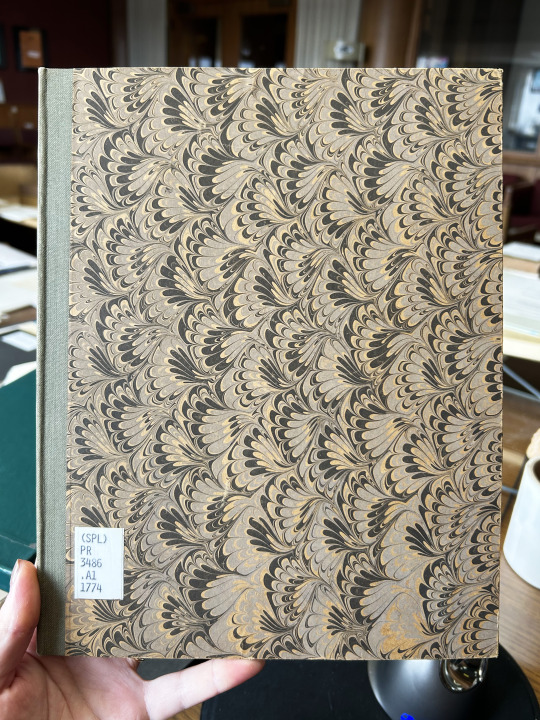

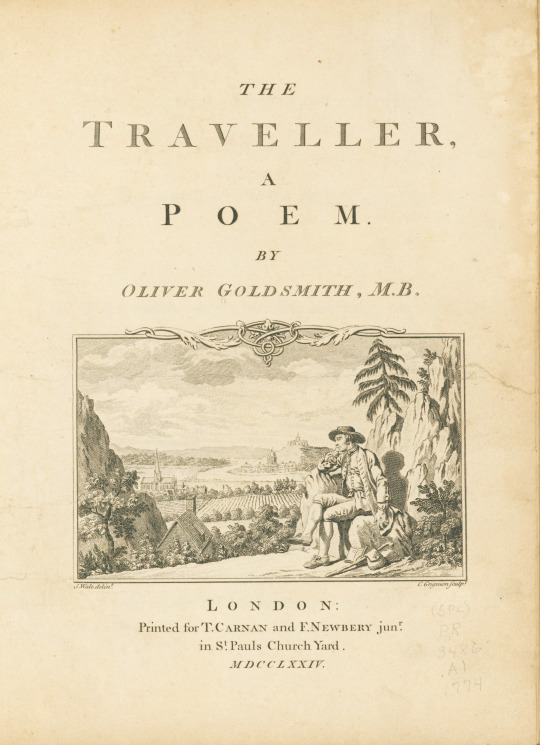

Marbled Monday
This week’s Marbled Monday is The Traveller, A Poem by Oliver Goldsmith (1728-1774) with an engraving designed by Samuel Wale (1721-1786) and engraved by Charles Grignion (1721-1810). Goldsmith’s best known work may be his novel The Vicar of Wakefield, though he also wrote several other poems. This book was printed for T. Carnan and F. Newbery Junior in St. Paul’s Church Yard, London, in 1774.
The binding is not contemporary to the work inside it, and was likely done at some point during the 20th century. This marbling is a bouquet or peacock pattern, done in a dark grey, light grey, and cream color scheme that is paired with a light grey-green book cloth for the spine.
View more Marbled Monday posts.
-- Alice, Special Collections Department Manager
#Marbled Monday#The Traveller#The Traveller A Poem#Oliver Goldsmith#Samuel Wale#Charles Grignion#The Vicar of Wakefield#peacock pattern#bouquet pattern#marbling#18th century#T. Carnan and F. Newbery
49 notes
·
View notes
Photo





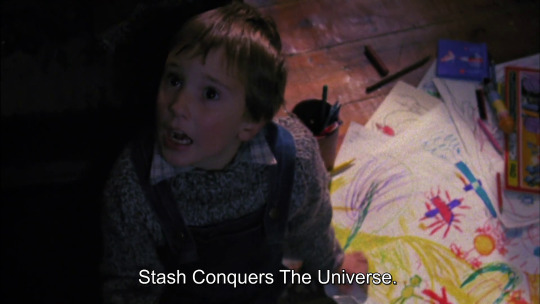
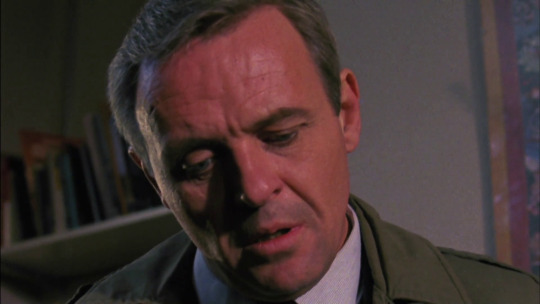
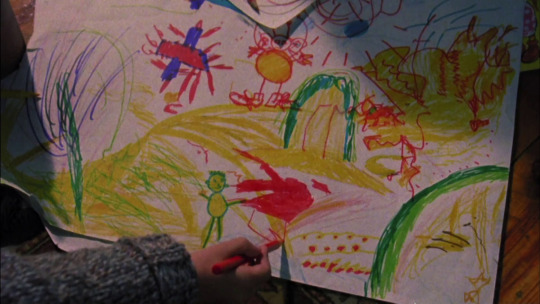


The Good Father (Mike Newell, 1985).
#the good father#the good father (1985)#mike newell#anthony hopkins#christopher hampton#michael coulter#peter hollywood#adrian smith#Alison Stewart-Richardson#pip newbery
28 notes
·
View notes
Text
"...where Protestants and Catholics killed each other for the greater glory of certain theological doctrines which are as incomprehensible to the present generation as the mysterious inscriptions of the ancient Etruscans. ... The poor little children of the year 1600 or 1650 ... never heard anything but 'religion.' Their heads were filled with 'predestination,' 'transubstantiation,' 'free will' and a hundred other queer words, expressing obscure points of 'the true faith,' whether Catholic or Protestant."
- Hendrik Willem van Loon, The Story of Mankind
Oh...oh nooooo...not predestination! Can you imagine spending your childhood surrounded by such obscure and incomprehensible concepts like free will and orthodoxy?
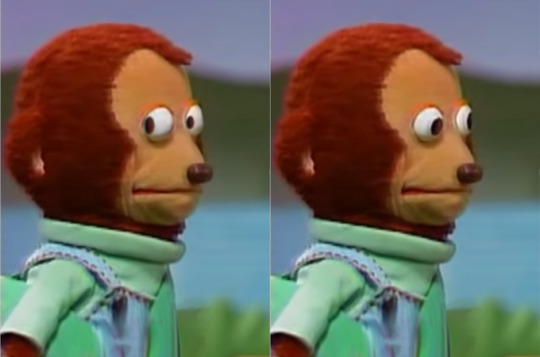
#newbery resolution#the story of mankind#hendrick willem van loon#this is even funnier/stupider considering my childhood was a good 70-80 years after this book was published#and yet - shockingly enough! - all of these concepts were ones i was familiar with#war flashbacks to the history textbooks that said calvinists spent (past tense!) most of their time worrying over who was saved or not#uuuuuuuuughghg i was expecting the ethnocentrism but this dude's tone bugs the heck out of me#christianity
5 notes
·
View notes
Text
The Slave Dancer (1974)
A review quote on the back of this book called it "horrifying," and that word is 110% accurate in describing my reading experience. I had to look up from time to time just to mentally process what I had just read.
The Slave Dancer is banned in virtually all school districts, and I certainly never saw it on any classroom shelf. It depicts in vivid detail the grotesque conditions of a boat heading to and from Africa to take a group of 98 slaves to America in the mid-1800s. The main character Jessie is kidnapped and forced to play his fife for the slaves each day to keep them active so their muscles don't atrophy over the course of the four-month journey. They're forced to do a kind of shuffle-dance in their chains, and if they don't move fast enough, they get whipped by a cat-o'-nine — a whip with nine knotted "tails." Both the crew and the slaves are subjected to the cat-o'-nine if they don't do what they're told (blah blah something about symbolism and how even the slavers are slaves to the industry...).
Jessie says, "I saw the others regarded the slaves as less than animals, although having a greater value in gold." The crew jam-packs the ship with so many slaves that there is nowhere for them to move. (I have memories of cramming into a crowded PRT car at WVU at the last minute, taking shallow breaths to avoid breathing in someone's body odor or too-strong perfume that's taken over the entire car — I'm imagining that discomfort tenfold.) There's so little space that many of the slaves afflicted with dysentery can't even make it to the latrine buckets fast enough because there are just too many people to get past.
Each day some of the crew tosses dead bodies overboard, with even some still alive if they're thought to be sick and spreading illness. Jessie notices a very young girl who makes a scene upon boarding the ship. She dies only a few days into the journey: "[Stout] held her upside down, his fingers gripping one thin brown ankle. Her eyes were open, staring at nothing. Foam had dried about her mouth. With one gesture, Stout flung her into the water." Jessie protests and is slapped by one of the crew in return.
There was one scene that I think will stick with me for a very long time. Ben Stout, one of the crewmembers in charge of the slaves (and whom Jessie feels is a truly evil man), drops Jessie's fife down into the slaves' hold and forces him to go retrieve it as a kind of sick punishment.
"I caught sight of a black face turned up toward the light. The man blinked his eyes, but there was no surprise written on his face. He had only looked up to see what was to befall him next. I went down the rope knowing my boots would strike living bodies. There was not an inch of space for then to move to. I sank down among them as though I had been dropped into the sea. I heard groans, the shifting of shackles, the damp sliding whisper of sweating arms and legs as the slaves tried desperately to curl themselves even tighter. ... To search the hold meant I would have to walk upon the blacks."
I can't even imagine the smell. For four months, day after day, week after week, with friends and family members who couldn't survive the trip simply being tossed overboard each morning... There's no way to comprehend the scale of that tragedy today, and nothing we experience in the U.S. could even come close.
At the end of the book, the crew sees a rival ship that could board and arrest them for being part of the slave trade, so the crew starts throwing the chained slaves overboard right and left to destroy the evidence. To top it off, a storm devastates the boat immediately after. Only Jessie and a single slave boy survive; every other slave and crewmember has either drowned or been killed. Jessie makes it home, but he lives with the memory of those months for the rest of his life. As a result, he can no longer tolerate hearing music of any kind.
This book reminded me a lot of the Studio Ghibli movie Grave of the Fireflies. It's a movie I think everyone should watch at some point in their life, but only once — no one would ever watch it a second time for fun. It's about two young siblings trying to survive alone in WW2-era Japan, and ultimately they both slowly starve to death. (Cinema Therapy's review of this movie examines it in depth if you're looking for a summary/don't want to submit yourself to the trauma of watching the whole thing.)
It's an important story that shouldn't be forgotten, but not for its entertainment value. My takeaway is that I think historical fiction has equal value to real history, in some cases, because it's able to humanize the past. Reading "many slaves did not survive the journey to America" in a textbook is just not the same as reading a description of a dead child being flung overboard by her ankle.
I don't know how this book fits into the larger conversation around banned books. This is a work I don't think someone under 13 should read, and even that's pushing it. I believe kids can handle a lot more than we give them credit for, but this was too much.
5/10 for the sheer devastation this brought, and I don't think I can give a Recommendable/Not Recommendable rating because it's in the same place as Grave of the Fireflies: the "this is important to preserve and talk about, but not fun in the slightest and will stay in your head in some capacity for the rest of your life" category.
#booklr#books#currently reading#newbery#newberyaward#newberymedal#reading#books and reading#the slave dancer
2 notes
·
View notes
Text
2023 ALA Youth Media Awards
I was a little disappointed by the coverage of the Youth Media Awards. So few of the book jackets were featured in the articles I read. I'd like to say a special thank you to @the-dust-jacket for taking the time to put together the beautiful posts I have reblogged below.
The Newbery, the Caldecott, the Coretta Scott King, the Bel Pre etc etc-- the whole point of these awards is to drive sales. Because those sales motivate publishers to print more diverse books. The bigger the sales bump, the more important the prize; the more important the prize, the bigger the sales bump.
I think seeing the covers makes a huge impact and I hope @the-dust-jacket's posts gets lots of reblogs.
Congratulations to all those honored this year!
#youthmediaawards#newbery medal#caldecott medal#schneider family awards#michael l printz award#alex award#stonewall book award#sydney taylor book awards#Loretta scott kings book awards#pura bel pre awards#mildred l batch elder award
38 notes
·
View notes
Text
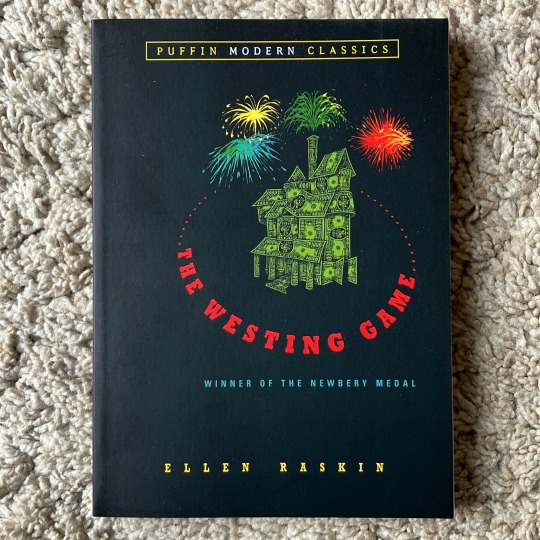
Ellen Raskin: The Westing Game (1978)
2 notes
·
View notes